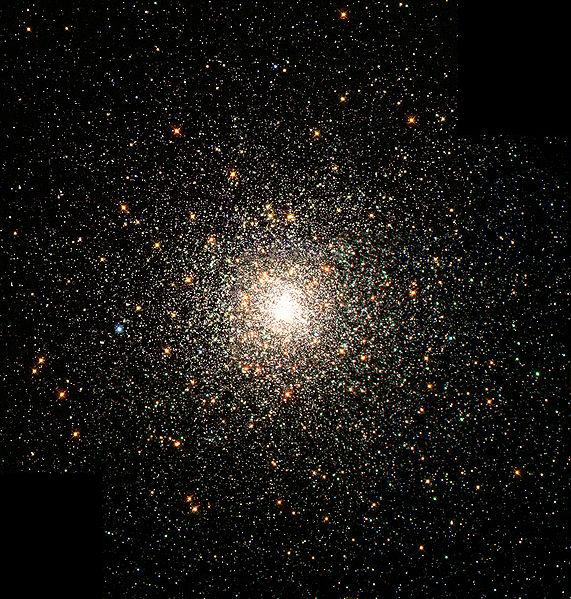One quarter of the star clusters in our galaxy may, in fact, be aliens, according to a paper in Monthly Notices of the Royal Astronomical Society.
The Halo around our galaxy contains a number of clusters of stars, called Globular Clusters or GCs, which orbit the centre of the galaxy. They tend to be more dense, older and contain more stars than the galactic clusters which form the familiar disc. Astronomers have known for a while that a percentage of these GCs are alien in origin, captured as the Milky Way accreted dwarf galaxies, but estimating what proportion of these GCs are aliens has proven difficult.
 Now, Terry Bridges, an astronomer at Queen's University in Kingston, Canada and Duncan Forbes of Swinburne University of Technology in Australia have used data from the Hubble telescope, among other sources, and compiled the largest ever high quality database recording the age and chemical properties of star clusters, and used this to estimate the proportion of aliens in our galaxy.
Now, Terry Bridges, an astronomer at Queen's University in Kingston, Canada and Duncan Forbes of Swinburne University of Technology in Australia have used data from the Hubble telescope, among other sources, and compiled the largest ever high quality database recording the age and chemical properties of star clusters, and used this to estimate the proportion of aliens in our galaxy.
But how do you spot alien star clusters? There are a few give-aways. Firstly, you can observe how the clusters move - clusters from a dwarf galaxy may retain some of it's momentum after being swallowed by the milky way, and this can present a distinct pattern. The second method is to use the metallicity of the cluster as a measure of its age. Metallicity can simply be thought of as the proportion of elements present that are not hydrogen or helium. Older clusters, or those with less activity, would be expected to have a lower metallicity - this means that the relationship between metallicity and age can be used as a indicator for the history of a particular globular cluster.
Bridges and Forbes discovered two distinct groups - one a fairly constant age of around 12.8 Billion years, and one with a far wider range of ages. This younger strand is likely to consist of dwarf galaxies accreted by our galaxy in the last few billion years, and accounts for hundreds of millions of stars - even as much as 25% of the galaxy.
Astronomers had already confirmed that two dwarf galaxies - Sagittarius and Canis Major - have contributed globular clusters to the Milky Way, and these made up a significant proportion of the 93 clusters studied. However, even once these were removed from the equation there is evidence that the remaining clusters originated from an additional 6 as yet unconfirmed dwarf galaxies.
So as always, space is enigmatic and fascinating, and there's lots more to learn!










Comments
Add a comment